CEDRIG Light
PDF ReportConstruction of a water treatment plant and sewer system for the Guaqui town, Department of La Paz / Municipality of Guaqui
Overview
General Information
Author
Roberto Méndez
Last updated
June 2018
Overall goal
Improve the current living conditions of Guaqui's inhabitants through the implementation of an appropriate sewage system, benefiting the overall population (perspective for the next 20 years)
Country
- Bolivia
Budget
Bs. 7.000.000 (approximately USD 1'000'000)
Duration
September 2016 - July 2017 (approximately 10 months)
Summary
Description
Due to the absence of a wastewater treatment plant treatment plant in the Guaqui town, wastewater is discharged directly to Titicaca Lake, causing serious water pollution. Through the construction of a sewage treatment plant, the water pollution will be reduced along with an improvement of the living conditions of the local population. However, as a result of frequent lake level fluctuations, the sewage treatment plant might suffer negative impacts from flooding. In addition, frosts during the cold winter months can affect the plant's main components such as (i) sewage collection network and sewer manhole, (ii) emissary, (iii) pumping sump, (iv) pumping line, (v) treatment plant, (vi) infiltration ditches.
Keywords
- Wastewater treatment system
- sewage collection network
- emissary
- pump stations
- lake contamination
- Bolivia
- Floods
- frosts
Sectors of Intervention
- Health
- Tourism
- Water and sanitation
Documents
Risk perspective
Hazards arising from environmental degradation
Hazard name
Water pollution (surface and subterranean)
Exposure
Not sure
Consequence
Laminar erosion of contaminated soils and effluent infiltration could result in contamination of surface and groundwaters to the detriment of uncovered populations
Likelihood
Unlikely
Extent
Harmful
Risk Level
Low risk
Hazard name
Degradation (land, soil, ecosystems, biodiversity)
Exposure
Yes
Comments
Altiplano zone with various erosional processes caused by wind (60%) and water (40%), relief with slopes between 2 and 10%.
Consequence
Silting of network, pumping sump and treatment plant
Likelihood
Likely
Extent
Slightly harmful
Risk Level
Low risk
Natural hazards (hydro-meteorological and geological)
Hazard name
Flash floods, floods
Exposure
Yes
Comments
According to the local hazard map, the water treatment plant is located in a flood prone area. Flood events occurred in 1986, 2002 and 2012. Approximately every 15 years.
Consequence
Damage of the wastewater treatment plant components such as pumping sump. Overflow of stabilization lagoons would contaminate crops near the plant
Likelihood
Very likely
Extent
Extremely harmful
Risk Level
High risk
Consequence
Damage to crops and animal fodder in surrounding areas due to flooding
Likelihood
Likely
Extent
Harmful
Risk Level
Medium risk
Hazard name
Extreme cold
Exposure
Not sure
Comments
At the project site, between 90 to 180 days per year with frosts are observed, 3'835 m above sea level, average temperatures around 4°C, minimum temperatures until -10°C. It happens on average every 2 years.
Consequence
Problems in the operation of the plant and reduced efficiency of the oxidation lagoons
Likelihood
Likely
Extent
Harmful
Risk Level
Medium risk
Hazards arising from climate change (and climate variability)
Hazard name
Changes in frequency and intensity of climatic extreme events and associated disasters (e.g. cold and heat waves, flood, drought, storms, hurricanes, cyclones)
Exposure
Not sure
Comments
There are variations of extreme temperatures, mainly frost with a tendency to increase in the future
Consequence
It could affect the operation and efficiency of the wastewater treatment plant in oxidation lagoons
Likelihood
Unlikely
Extent
Harmful
Risk Level
Low risk
Detailed risk assessment needed?
Impact perspective
Estimate impact on the environment
Environmental Area
Water
Component of the activity
Wastewater treatment plant
Impact on environment
Bad odors from the plant could disturb the surrounding population
Estimate impact on disaster risks
Component of the activity
Wastewater treatment plant
Exacerbated or newly created risk
Could be an incentive for the construction of new settlements in areas at risk from flooding
Estimate impact on climate change
Component of the activity
Wastewater treatment plant
Impacts on climate change
Greenhouse gas emissions from oxidation lagoons

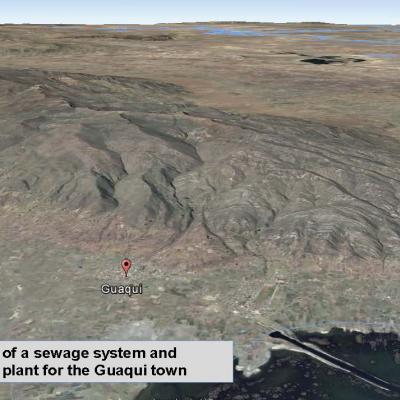
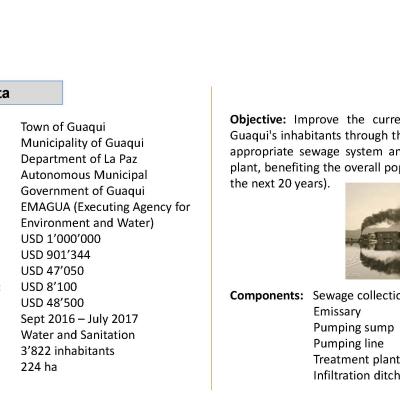
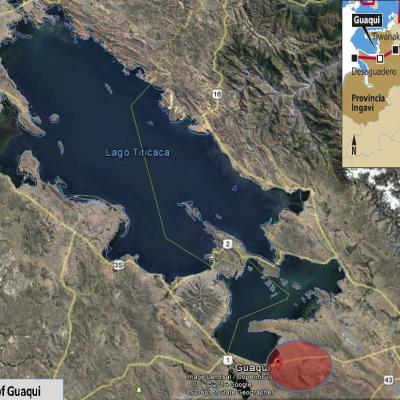
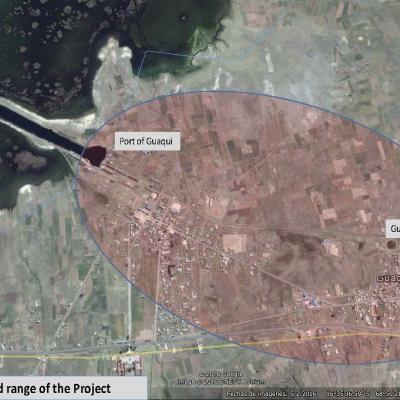
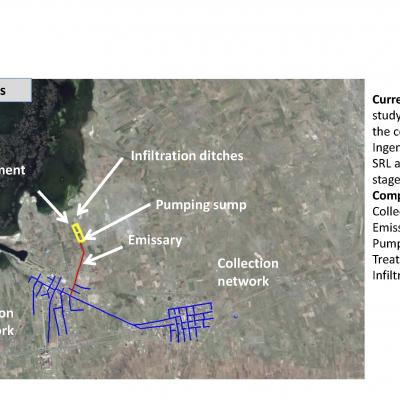
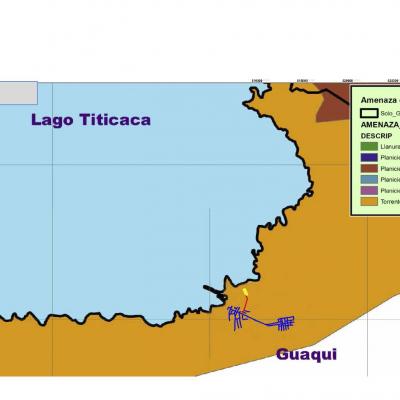
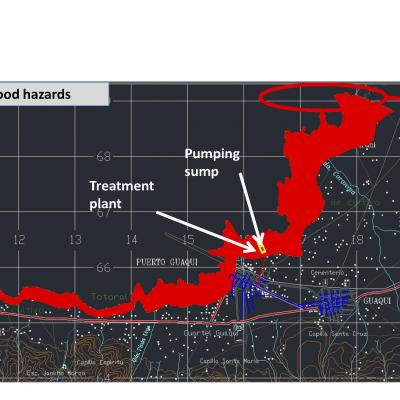
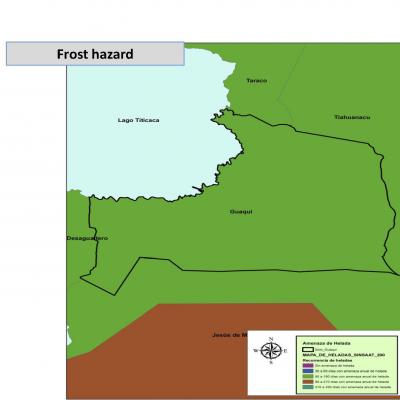
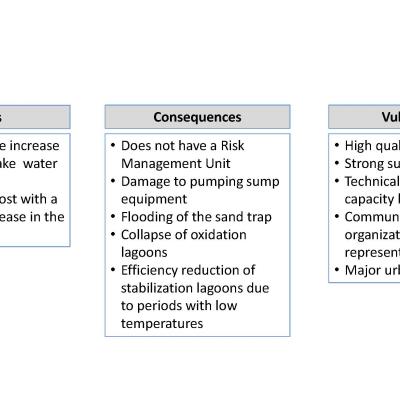
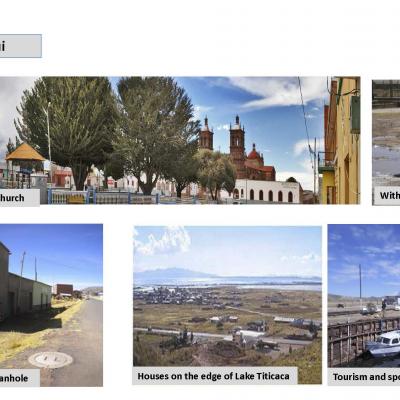
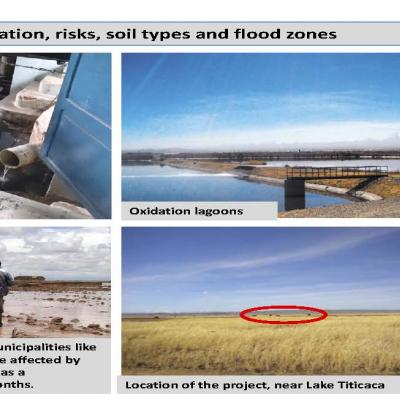
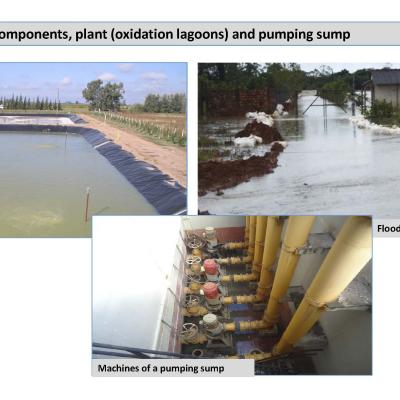
Comments
Domestic sewage is untreated and are discharged into the fields/grounds and lake